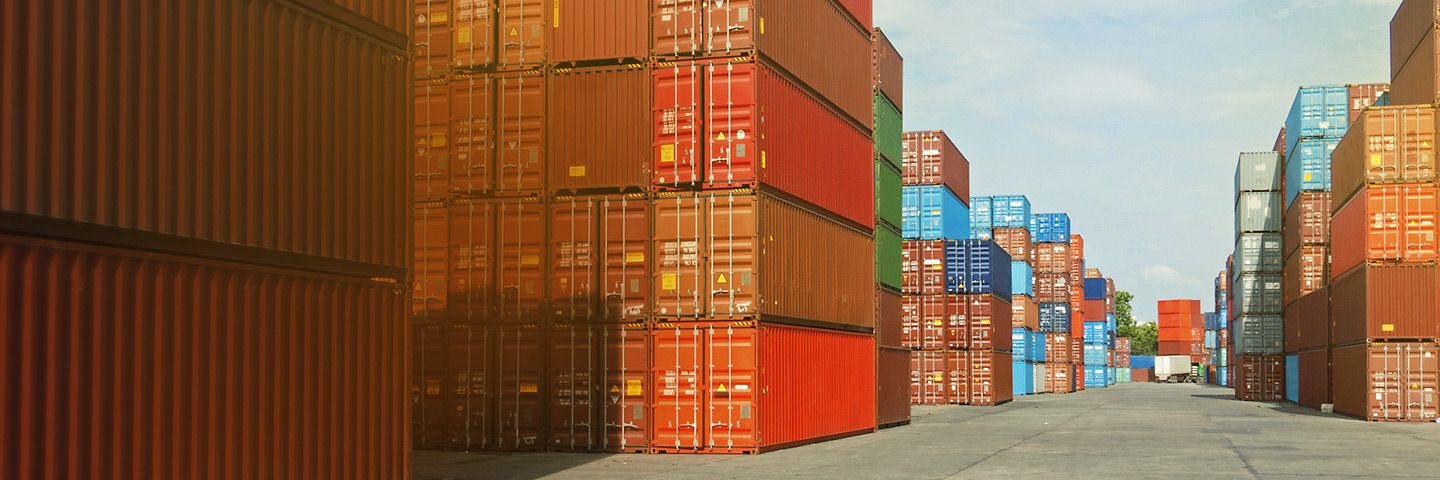

Digital supply chain: smart, robust, successful
Contact us
Use case: Customers expect real-time information about the progress of their shipments. Shipment tracking enables you to meet this demand.
Challenge: Providing up-to-the-minute updates on location, delivery time, and delays is challenging, especially when dealing with long routes that may cross international borders or involve multiple transportation providers.
Solution: With our solutions, you can track shipments using advanced technologies and determine their current location. You can make the information available to your customers, shipping service providers and partners in real time.
Your benefits: Up-to-date shipment location data enables you to optimise transport routes, avoid empty runs, and optimise delivery times. Precise shipment notifications create confidence among your logistics partners and customers.
![]()
Use case: Efficient management of returned goods is important for customers. If they know they can easily return products, they are more likely to buy from the same company again.
Challenge: Managing returns requires efficient communication and coordination between different departments and customers. Determining the condition and value of returned goods produces costs, as does restocking or disposal.
Solution: Our solution introduces clear processes for returns. End customers can order returns via a personalised landing page and generate return labels. You always have an overview of which goods are returned and when.
Your benefits: Efficient returns management improves customer relations. By collecting data, you can gain valuable information. Analysing this information enables you to identify trends, understand the reasons for returns, and improve products and processes.

Use case: In the food, pharmaceutical and chemical industries, prescribed temperatures must be maintained during transport. Perishable or temperature-sensitive products must be transported and stored safely.
Challenge: Temperature fluctuations during transport, at transfer points, and during storage make it difficult to verify that temperature levels are maintained without interruption. If the cold chain is not monitored in real time, problems cannot be detected and corrected immediately.
Solution: Temperature sensors monitor your goods throughout the supply chain. They provide real-time data and trigger alarms in case of deviations. This allows you to track the status of the cold chain at any time and take action. Reports create transparency for all parties involved.
Your benefits: By continuously monitoring the cold chain, you can prevent spoilage. Thanks to the monitoring and recording of temperature data, you prove that you comply with regulations, which increases customer confidence and minimises legal risks.

Use case: To ensure efficient inventory management, a manufacturing company or distributor needs information on inventory, deliveries, and transportation and storage capacities.
Challenge: Lack of or insufficient stock can lead to production and delivery bottlenecks, while excess stock increases inventory costs. However, the throughput of goods is often too dynamic to coordinate inventory management manually.
Solution: Ordering processes are streamlined through digitally controlled replenishment. Real-time sensor data on inventory levels and deliveries allow accurate production and delivery performance planning. Demand forecasts support planning and optimise inventory management.
Your benefits: You can streamline your planning processes and reduce inventory costs. You can increase customer satisfaction by increasing the reliability of your deliveries and proactive real-time information.

Use case: Seamless and disruption-free distribution of delivery information enables smooth collaboration between all stakeholders: manufacturers, logistics providers, distributors, and customers.
Challenge: The flow of data and information with suppliers and partners requires manual intervention in the event of media disruptions. At the same time, multiple disparate interfaces hinder easy communication mergers.
Solution: Our solutions are easy to implement and enable data exchange between all participants in the logistics chain. Standardised procedures and formats simplify the exchange of information. Freight exchanges can be connected as easily as fleet management or ERP systems.
Your benefits: With digital data exchange, you increase the efficiency of your handling processes and gain real-time information on delivery status. Communication with your suppliers and customers takes place electronically, eliminating the need for time-consuming manual activities.

Use case: Quality management in the logistics chain ensures high product quality throughout the logistics process – from procurement and production to delivery to the customer.
Challenge: Lack of transparency and coordination can lead to quality problems. In addition, improper storage conditions, transportation difficulties, ineffective processes or incorrect handling can affect quality. This can lead to product loss, waste and customer dissatisfaction.
Solution: Comprehensive data collection along the supply chain provides important information that you can use to ensure quality and optimise processes. Analytics enable you to detect deviations and identify weak points. The solution detects data anomalies and warns you in good time.
Your benefits: You receive an easy-to-use, data-based efficiency enhancement for your value chain that shows you growth and savings potential in a comprehensible way. This promotes customer satisfaction and improves your competitive opportunities.

Use case: Waste management takes care of returning empty containers, packaging materials and waste. It ensures the recycling of materials and thus supports environmental protection.
Challenge: Often, the locations of waste containers are not clearly labelled. In addition, transportation is usually carried out by different service providers, which makes manual management difficult. In addition, legal regulations must be complied with.
Solution: With our inventory management, you know where your waste containers are at all times. Our solution is a tracking system with AI-driven data analysis to measure fill levels and protect against theft (e.g. of scrap metal). It controls disposal by fill level and simplifies communication with disposal companies.
Your benefits: You can reduce costs with efficient disposal. Structured disposal management ensures that legal regulations are complied with.
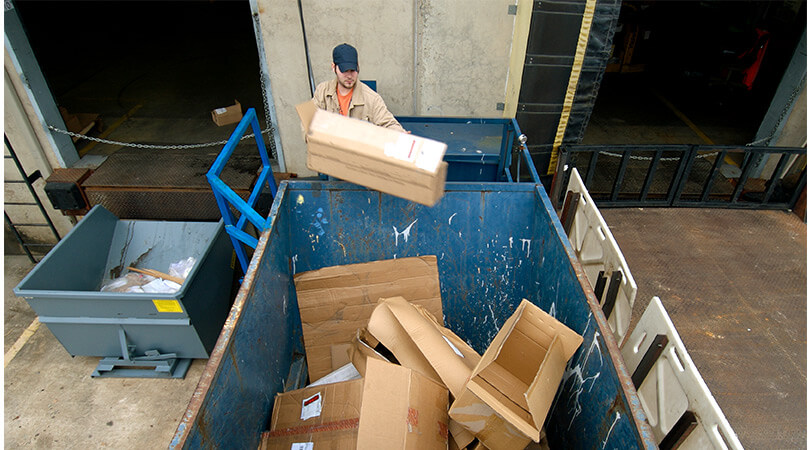
Use case: Load scheduling (i.e. planning transportation by assigning freight to vehicles and routes) should ensure the optimal use of cargo space capacities depending on the sequence of stops on the tour.
Challenge: Selecting the optimal routes, taking into account traffic conditions, delivery times and costs, requires precise planning. The effective allocation of vehicles and the correct use of resources can no longer be handled manually with a large number of orders.
Solution: Our intelligent dispatching systems use optimisation algorithms that enable optimal vehicle allocation and route planning. With the help of real-time data and GPS tracking, they continuously adjust schedules to changing conditions.
Your benefits: Our effective load scheduling enables you to make optimal use of your vehicles and avoid empty runs. This leads to cost savings and higher profitability. Optimal planning of shipments ensures on-time deliveries. This strengthens the trust of your customers.
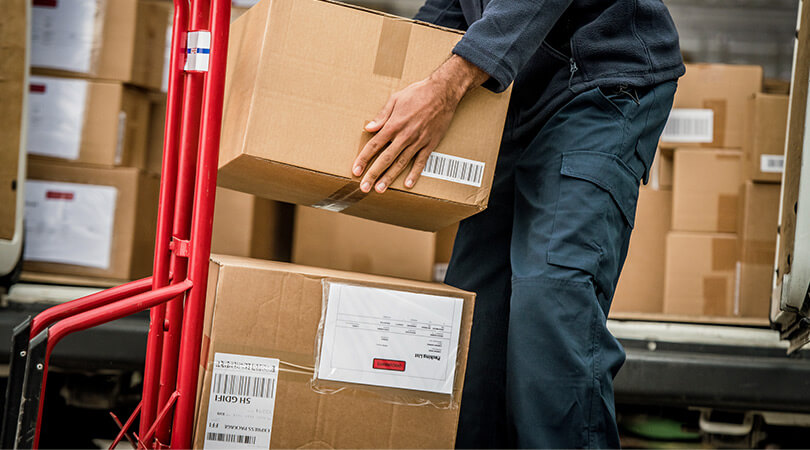
Use case: Warehouse logistics manages the storage of own and third-party goods in warehouses. It determines how incoming goods, goods transport, the type of storage and goods issue are to be carried out. Accurate inventory management is required to ensure product availability while optimising storage costs.
Challenge: The placement of products and design of the warehouse layout must be well thought out to allow efficient movement of goods and quick access. Bottlenecks or inadequate use of storage space can lead to delays in picking and shipping.
Solution: Our IoT solutions also increase your efficiency in the warehouse. Automated ordering saves time, simplifies processes and reduces errors. Since goods can be automatically entered into and removed from the system, efficient incoming goods control and inventory management are possible.
More about Smart Warehouse Management

Use case: Knowing the ETA (Estimated Time of Arrival) of deliveries is crucial for efficiently planning storage capacities, means of transport and production processes. Precise information on the delivery time also increases customer satisfaction and boosts trust.
Challenge: A delay in deliveries can lead to costly changes in production schedules or even plant shutdowns. If many transport vehicles arrive at the same time, loading and unloading stations can be blocked and cause bottlenecks in the warehouse. If binding delivery times are not met, there is even the threat of contractual penalties.
Solution: The ETA calculation forecasts the arrival of transport vehicles, integrating real-time information about bottlenecks and disruptions. Each time new telematics data arrives, the expected arrival time is recalculated. This creates planning reliability for customers and dispatchers.
Your benefits: The reliable arrival time prediction creates planning reliability for customers and dispatchers.

Use case: A delivery slip contains all important information about the shipper, recipient, products and quantity. It serves as a receipt for deliveries of goods, contains all the necessary information for the transfer of transport and is often the basis for invoicing.
Challenge: The preparation and archiving of paper documents are very time-consuming and error-prone. This leads to increased expenses both in transport and in merchandise management and accounting. Returns have a considerable time lag until the signed delivery bill with the list of defects arrives at the shipper.
Solution: With the creation of the digital delivery bill by the shipper, all parties involved in the logistics chain have a unique identifier for the transfer of goods that can be used to save time. It is used as a digital record of the load during inspections and for logging the transfer of freight. The delivery of goods is booked electronically and can be used automatically for scheduling and invoicing the transport and goods.
Your benefits: Digital delivery bills simplify the handling of logistics processes, minimise sources of error and save costs.
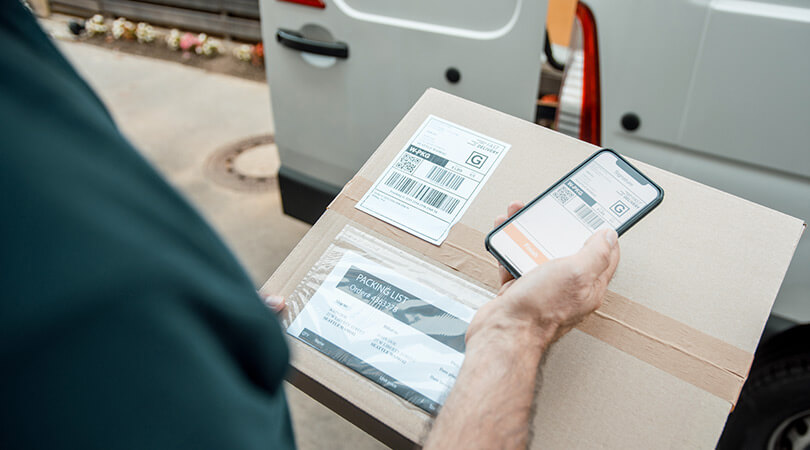
Use case: Order management ensures that the right products are delivered to customers in the right quantity and quality and at the right time. It controls the entry, processing and fulfilment of transport and warehouse orders. The goal is to meet customer requirements in a timely and cost-efficient manner.
Challenge: Only a limited number of orders can be managed manually, which is also very time-consuming. In addition, prioritising orders is difficult without digital support. If an order status is unclear or accounting errors occur, time-consuming research is required, which leads to unnecessary expenses.
Solution: IoT solutions capture customer orders centrally and digitally support the coordination of order processing.
Your benefits: Productivity in order processing and delivery quality are improved. In addition, it facilitates seamless monitoring of delivery progress and secure communication with customers.

Use case: Costs associated with the transportation of goods in the supply chain need to be recorded and accounted for.
Challenge: Recording and monitoring all costs associated with the transportation of goods must be correctly allocated to all parties involved in complex supply chains. On top of that, numerous legal and tax requirements need to be met.
Solution: All the data required for invoicing is recorded centrally, digitally, and displayed clearly. Invoicing takes place automatically after the service has been provided.
Your benefits: Digital transport cost accounting ensures transparency and control over costs along the entire supply chain. This gives you the opportunity to increase efficiency and maximise profitability.

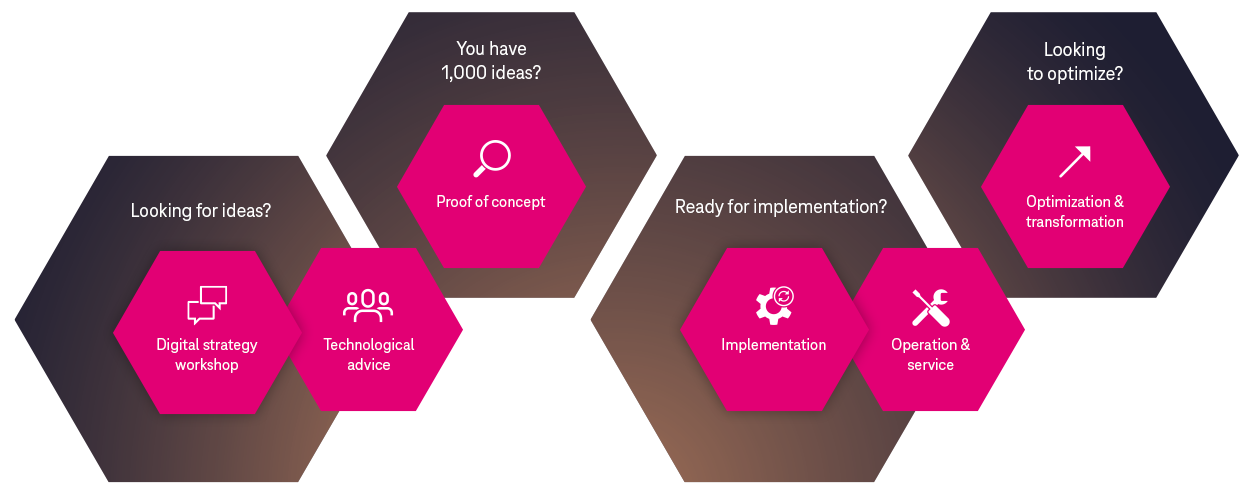
When a company uses digital technologies to improve the efficiency, robustness and flexibility of its supply chain, we call it a digital supply chain. To do so, a company may utilise Internet-of-Things (IoT) solutions, artificial intelligence (AI) or blockchain technology. These technologies make it possible to obtain real-time information about processes in the supply chain, providing greater transparency. This improves coordination and communication between the various players in the supply chain and makes numerous process optimisations possible.
The digitalisation of the supply chain brings a variety of benefits that improve efficiency, transparency and flexibility. Here are some of the most important benefits:
- Better collaboration: Digital supply chains improve communication and cooperation between manufacturers, logistics providers and customers, leading to end-to-end collaboration between all stakeholders involved.
- End-to-end transparency: Participating companies can receive information on the status of orders, stock levels, deliveries and other relevant parameters in real-time, creating visibility across the entire delivery process.
- Greater effectiveness: By automating logistics, companies can significantly increase the effectiveness of their supply chain. Tool-supported scheduling, for example, ensures that existing transport capacities are utilised optimally and empty runs are avoided.
- Cost savings through greater efficiency: Digitalisation enables companies to reduce their costs by optimising processes, managing stock more effectively and eliminating inefficient workflows.
- Improved decision-making: By analysing logistics data and using advanced analytical tools, companies can make better-informed decisions. This includes predicting changes in demand, optimising inventory levels and selecting optimal delivery routes.
- Enhanced customer focus: A digitalised supply chain enables companies to better respond to customer needs. Faster delivery times, more accurate delivery forecasts and improved communication help to increase customer satisfaction.
- Ensuring the ability to deliver: Digital supply chains are often better able to respond to changes in demand, supplier problems or other unforeseen events due to their greater flexibility, which contributes to the robustness of the supply chain.
- Legal security: A digital supply chain enables detailed documentation of transactions and processes in real time, creating a transparent record that can serve as a source of legal evidence in the event of disputes or audits.
While digitising the supply chain brings a number of advantages, its implementation may also pose several challenges that should be taken into account:
- Integration complexity: Different systems must be brought together to form a functioning digital supply chain. The management of these systems and partners can be complex. Deutsche Telekom offers a comprehensive solution by providing an integrated package of hardware, connectivity and software. This package reduces the number of contact persons, ensures smooth interaction between all components and allows you to start using your solution quickly.
- Interoperability: Smooth communication between all components of the digital supply chain is crucial. Deutsche Telekom provides a portfolio of certified devices and modular software components that eliminate the need for complicated adjustments and ensure that your project takes off without delays. Data can be transferred to existing systems or customised applications via programming interfaces (APIs).
- Usability: Vehicle managers, warehouse staff, purchasing, and production management—supply chain management solutions are used by employees with a wide range of technical expertise. The user-friendliness of a supply chain management solution can have a significant impact on the effectiveness and efficiency of supply chain processes. In times of skilled labour shortages, users must be able to easily plan, monitor and control the supply chain and processes should be controlled automatically whenever possible.
- Data security and protection: Because digital supply chains process large amounts of sensitive data, mobile communications are ideal for networking. SIM cards can provide a secure method for identifying and authenticating devices, as well as for encryption. Mobile network operators must also comply with very strict regulatory standards. Deutsche Telekom is internationally recognised as a leading cybersecurity provider. All data is stored on servers in highly secure computing centres in the EU – regardless of whether it is operational data or customer data.
- Connectivity: Digital supply chains can extend across multiple continents making it challenging to ensure connectivity, such as for tracking solutions in different countries. With just one contract, Deutsche Telekom offers NB-IoT, LTE-M, 4G and 3G via its own networks in Europe and the USA as well as via roaming agreements with over 600 international partners. Even in places without network coverage, such as deserts or savannahs, we can provide you with a data connection via satellite communication.
Artificial intelligence (AI) in logistics has the potential to control extremely complex processes along the entire value chain in the future. It offers numerous opportunities to optimise processes and decision-making. Here are some of the most important applications of AI in the digital supply chain:
- Demand forecasts: Which items will be in high demand in the near future? Predicting the demand for goods and the need for preliminary products is an unsolved challenge within supply chain management. AI can make predictions about future demand by analysing factors such as historical data, market trends or weather conditions, allowing companies to better plan their production and stock levels.
- Inventory management: Which components will be needed for future orders? AI systems can help determine optimal stock levels by continuously analysing data on consumption, delivery times and other factors. This enables companies to reduce storage costs without increasing the risk of bottlenecks.
- Process optimisation: Machine learning models such as neural networks can predict the effects of control decisions and incidents. Plant simulations, for example, can determine what effects a machine failure in a factory would have on component production. In this way, supply chains can be designed to optimise just-in-time production.
Blockchain is a decentralised and cryptographic database technology that is used to record transactions securely and transparently. It can be used to create a link between the physical supply chain and payment flows. Automating recurring, consistent payments in the micropayment area along the supply chain can significantly simplify billing processes. Some of the key roles of blockchain in the digital supply chain are:
- Transparency and traceability: Using a blockchain enables the transparent and unalterable recording of transactions and data along the supply chain, facilitating the traceability of products from origin to end use. This is particularly important in sectors such as the food, pharmaceutical and electronics industries, where traceability and transparency are crucial.
- Trust and authentication: The decentralisation and immutability of data in a blockchain strengthens trust between the various players in the supply chain. Companies can ensure that information about products and transactions cannot be falsified.
- Smart contracts: These are self-executing contracts that can be implemented in a blockchain. They automate contractual terms and processes, which can lead to increased efficiency and lower transaction costs. In a smart contract, for example, payments could be automatically triggered when predefined conditions are met.
T-Systems and Commerzbank are currently developing a solution for fully automated supply chains with integrated financial services based on a blockchain. Financial transactions are processed using blockchain or Distributed Ledger Technology (DLT) technology based on smart contracts that regulate which financial transactions are triggered by predefined conditions. IoT sensors and T-Systems' integration platform work together to trigger orders and payments, which Commerzbank then fully executes automatically. Eliminating manual processes in logistics and billing reduces errors and leads to savings for customers.
The integration of IoT data into enterprise resource planning (ERP) systems such as SAP S/4HANA or Microsoft Dynamics is crucial for the efficient organisation of the digital supply chain. Deutsche Telekom is an important partner of both SAP and Microsoft, ensuring that data can be exchanged smoothly with solutions from both companies. For example, Deutsche Telekom and SAP are developing and certifying interfaces between Deutsche Telekom's IoT platforms and the SAP Cloud Platform. For selected applications, data generated by Deutsche Telekom are automatically transferred to SAP Leonardo IoT, SAP's IoT solution. Deutsche Telekom also provides powerful resources for integrating IoT data into existing systems. We not only have the necessary tools and platforms, but also experienced development teams to use and implement them.
Digital supply chain solutions must wirelessly share and integrate data from different sources and countries. The best way to establish these connections is through mobile communications, as it is accessible worldwide and very secure. Hardly any other company has the global presence and expertise in mobile communications that Deutsche Telekom has. With us, you are able to receive a data connection, software solutions and advice throughout all phases of your project from a single source. We also have long-standing, reliable partnerships with other technology companies and a broad ecosystem of solutions providers, enabling us to support you with customised solutions that meet your individual requirements.







